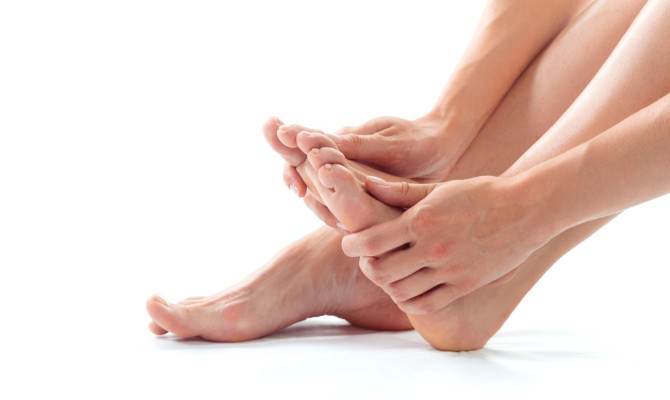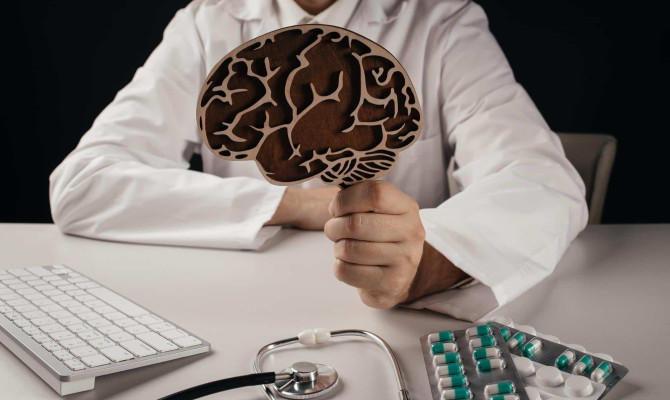Angina pectoris and its management

- Angina pectoris
- 14 Aug 2023
Overview
What is Angina pectoris?
Angina pectoris is the uneasiness or ache in the chest area due to inadequate oxygen supply to the cardiac (heart) muscles. The heart stresses more to increase the blood flow and oxygen intake, leading to a faster heart rate. This rapid heart rate causes significant pain in the chest area. Angina pectoris is not a disorder but can be an alarming sign for future heart attacks. The pain of angina pectoris is temporary and may last only a few minutes during physical exercise or any strenuous activity, and the person may be average after that.
Angina pectoris is a type of angina. Before going into the detail of angina pectoris, let us first know, what is angina .
What is angina?
Angina is a chest ache due to inadequate blood flow to the heart muscle. A person experiencing angina may feel mild discomfort or squeezing pain in the chest area and may also feel like heartburn due to indigestion.

Classification
Classification of angina
There are four types of angina. They are as follows-
- Stable angina
- Unstable angina
- Variant angina
- Microvascular angina
Stable angina
- Stable angina is a chest pain (medical terminology is angina pectoris) occurring due to the narrowing of the heart’s arteries.
- Stable angina causes heaviness, tightness and sharp pain in the chest area, and also, there might be prominent uneasiness in the shoulder, arm, back or neck area.
- Chest pain could happen when someone suffers from anxiety and distress, climbing stairs or strenuous exercise.
- Symptoms disappear in 5 minutes after resting or taking some medication.
Stable angina may occur under the following conditions-
- Insufficient oxygen supply to heart muscles
- One or more heart arteries which carry blood to the heart are blocked.
In angina pectoris(stable angina), a slow increase of a waxy substance known as plaque within a coronary artery causes the heart to stress more to get the required oxygen for normal body functioning.
Unstable angina:
- Unstable angina is unpredicted chest pain due to a broken blood clot from the artery wall that blocks the arteries.
- Symptoms persist even after relaxing or taking medication.
- The leading cause is decreased blood flow through the coronary arteries to the heart muscle.
- The coronary arteries narrow up due to fat deposition, which can eventually rupture the arteries causing damage to the coronary blood vessel. The result is blood clotting, which blocks blood flow to the heart muscle.
- Unstable Angina can occur every time a blood clot interrupts blood flow in an artery.
- This unstable angina should be considered a medical emergency.
Any new severe chest discomfort that doesn’t subside should be intimated immediately to the medical support team because the patient may suffer from extreme conditions like heart attack, which may eventually cause cardiac arrest (heart failure).
Variant angina
- Variant angina, also called prinzmetal’s, is a rare form of angina due to coronary artery contraction.
- The symptoms of variant angina typically occur during the resting period or sleeping.
- The person experiences severe chest pain, which improves with medications that dilate the coronary blood vessels.
Microvascular angina
- Microvascular angina is chest pain without any coronary artery blockage.
- The pain is due to the reduced function of small blood vessels carrying blood to the heart, arms and legs.
- The symptoms may last for half an hour or longer 1classification of angina| Researched based study from nih.gov
Symptoms
Symptoms of angina pectoris
The common symptoms of angina pectoris are as follows-
- Chest pain or uneasiness, such as pressure and tightening of the chest below the breastbone (when the heart works harder to get enough oxygen during strenuous activities)
- The person may feel like the chest pain is increasing in other areas like the back, arms, shoulder, neck, ear lobes and other body parts
- The person may feel like an upset stomach or gas.
- Difficulty in breathing
- Excess tiredness
- Lightheadedness
- Nausea and vomiting
- Perspiration (sweating)
- Dizziness
Angina pectoris patients may find that the pain episode doesn’t come suddenly and lasts for only a short span (5 to 10 minutes). However, the pain can be relieved by taking some rest and medication.
The causes of angina pectoris are due to the heart’s cardiac muscles (myocardium) not getting adequate blood and oxygen for normal body activities 2Causes of angina| Researched based study from sciencedirect.com
Management
Management of angina pectoris
Management of Angina Pectoris is of the following categories-
- Modification in everyday life
- Drugs
- Surgery
Modification in everyday life
Specific modification in everyday life is needed to prevent future attacks of stable angina. These modifications may include the following-
- Taking a balanced healthy diet (fruits, vegetables, whole grains)
- Exercise
- Maintaining body weight
- Quit smoking
These changes in daily life prevent future risks of probable diseases like high sugar, high pressure and high cholesterol, which can affect pectoral angina leading to chronic heart disease.
Drugs
Doctors often consider the following drugs or medications to treat stable angina-
Anti-ischemic
- Anti-ischemic drugs increase the oxygen supply to the cardiac muscles preventing coronial arterial disease (CAD).
β-blockers
- Beta-blockers (also called beta-adrenergic blocking agents), are drugs to reduce the blood pressure of individuals by blocking the effects of the adrenaline (also called epinephrine ) hormone.
- Some examples of β-blockers drugs are metoprolol, propranolol and atenolol.
Calcium-channel blockers
- Calcium channel blockers are drugs to reduce blood pressure.
- Calcium blockers help widen the blood vessels to improve blood flow.
- The drug is recommended only when beta-blocker drugs do not respond.
- Some examples of Calcium channel blocker drugs are -amlodipine, verapamil, and amlodipine.
Long-acting nitrates
- Long-acting nitrates are drugs that dilate the coronary blood vessels initiating muscle relaxation, thus improving blood flow to the heart muscles.
- Nitroglycerin is a long-acting nitrate recommended for angina pectoris and effectively relieves the patient’s pain, e.g. , nitrate drug used for angina pectoris isosorbide dinitrate.
Antiplatelet agents
- Antiplatelet agents are drugs that help prevent blood clot formation in the arteries.
- Some examples of antiplatelet agents are aspirin and clopidogrel.
Hypolipemic
- Hypolipidemic are drugs that lower lipoproteins amount in the blood. Lipoproteins ( composed of fats and proteins) carry cholesterol in the blood.
- One such example of hypolipidemic medicine is statin.
Patients also need to take other medications to manage associated conditions that lead to stable angina, viz; high cholesterol, high sugar (diabetes) and hypertension (high blood pressure).
It is always advisable to consult the doctor if the patient suffers from any of these conditions so that the doctor gives the required medication to manage the high blood pressure better, preventing the patient from getting future angina attacks.
Surgery
Angioplasty
- Angioplasty -is the surgery recommended for stable angina. It is a minimally invasive procedure to improve blood flow to the heart’s coronary artery.
- In this procedure, a small balloon is inserted inside the artery, and then inflated to dilate the artery and improve blood flow.
- However, nowadays, doctors also use stents (short tubes)- permanently inserted into the artery to improve the blood flow to the heart.
Open heart surgery
- Open heart surgery is a type of surgery in which the chest is cut open to treat blocked arteries and prevent chest aches.
- Doctors may perform a coronary artery bypass graft to treat coronary heart disease. In this procedure, a blood vessel is cut from other body parts, like the leg, arm or chest and placed near the blocked artery.
- This new vessel created is known as a graft. The number of grafts to be inserted depends on the number of blocked coronary arteries.
- Open heart surgery is a major operation carried out under general anaesthesia (administered for whole-body unconsciousness) and may take up to 6 hours Long-acting nitrates 2Management for Angina pectoris | Researched based study from nih.gov
Complications
Complications of angina pectoris
- If left untreated, angina pectoris can lead to severe heart complications, sometimes fatal. Some of the difficulties of angina pectoris are as follows-
- Unstable angina is a form of acute coronary disease that results in unexpected chest pain even during resting. It happens because of decreased blood flow to the heart muscle.
- Irregular heartbeats (arrhythmias) occur when the electrical signals generated by the heart’s sinoatrial node (SA node) don’t function properly. The defective signaling causes the heart to beat too quickly or slowly.
- Myocardial infarction is due to blockage of the coronary arteries because of fat and cholesterol or blood clot.
- Heart failure is when our heart cannot pump blood normally, and the condition worsens over time. Heart failure results in organ damage, and fluid gets collected in the lungs.
Home remedies
Home remedies for angina pectoris
Some of the home treatment for Angina Pectoris is as follows-
Water
- Drinking plenty of water may help reduce blood clotting in angina pectoris patients.
Lemon
- Including lemon in everyday diet may help reduce the fat and cholesterol deposition in our body.
Garlic
- Including 2 to 3 garlic cloves in an everyday diet lowers blood pressure and thus controls hypertension (high blood pressure).
Basil leaves (tulsi)
- Basil leaves (tulsi) have anti-microbial and anti-inflammatory properties; thus, eating tulsi leaves help control angina pectoris pain.
Fenugreek (commonly known as methi seeds)
- When taken on an empty stomach, overnight-soaked Fenugreek seeds help reduce blood cholesterol and control blood pressure.
Onion
- Raw onion juice taken in the morning can reduce blood cholesterol.
Amla
- Amla has antioxidant and anti-inflammatory properties and helps control angina pectoris pain. Moreover, amla also helps stimulate blood flow and heart pumping.
Grapes
- Grapes have antioxidant properties and potassium and thus help the body against oxidative stress (causes tissue damage) and in normal heart function. Grapes help lower cholesterol in the body and thus reduce the risk of a heart attack in angina pectoris patients.
Carbohydrate
- Complex carbohydrates such as grains, and vegetables reduce inflammation and help decrease the fat deposition in the arteries and thus help prevent heart diseases.
Parsley
- Parsley is a herb with dark green leaves rich in antioxidants, vitamins C, K, A and potassium. It is essential in treating angina , and people can consume it in dry or fresh form. Parsley tea drink helps treat angina.
Fermented food
- Curds and yogurts contain probiotics (i.e. beneficial bacteria) which have heart-related benefits and are helpful for angina patients.
Takeaway
Key takeaways
People with stable angina seem reasonable, and their condition improves with medication. Making adequate lifestyle changes can also keep them healthy without further deterioration of their symptoms. Lifestyle changes include:
- Regular exercise to keep oneself fit
- Eating healthy (a well-balanced diet)
- Preventing one from getting overweight, and
- Cessation of smoking
Chest pain may persist if one cannot adapt to healthier habits which might increase the risk for other types of heart disease. Moreover, it is essential to contact a physician if one experiences stable angina symptoms.
Any feedback on this article?
 This Articles content was accurate
This Articles content was accurate Very Informative Article
Very Informative Article I have a question or a comment
I have a question or a comment
 This article contains inaccurate content
This article contains inaccurate content This article was not helpful
This article was not helpful I have a question or a comment
I have a question or a comment
We appreciate your helpful feedback!
Checkout our social pages
References
-
National Institutes of Health
Stable Angina/Overview/Symptoms
-
Science Direct
Angina Pectoris/Management
-
National Institutes of Health
Drug treatment of stable angina pectoris and mass dissemination of therapeutic guidelines: a randomized controlled trial






































